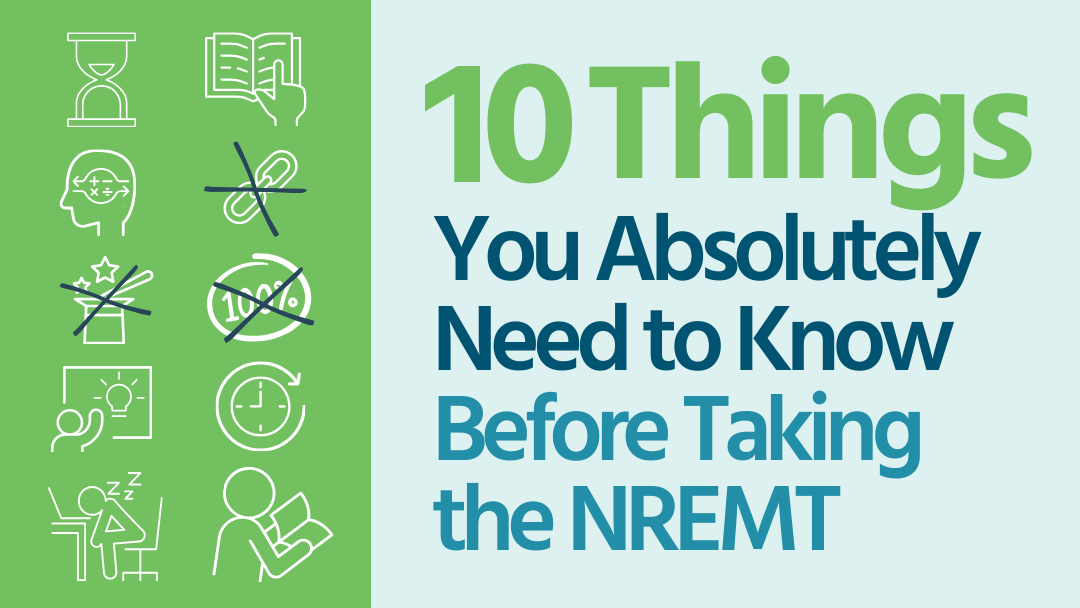5 Realities of COVID-19 for EMS Educators

by Dan Limmer, BS, NRP
Our articles are read by an automated voice. We offer the option to listen to our articles as soon as they are published to enhance accessibility. Issues? Please let us know using the contact form.
I've been listening to and watching educators deal with the fallout from COVID-19. I see some amazing innovation and resilience every day. However, there are also some stark realities that educators need to deal with in the coming days.
Here is my list of 5 Realities of COVID-19 for EMS Educators.
Starting in January and finishing in May just isn’t going to happen.
It was a beautiful thing. We bring students in at the beginning of the semester, and most make it out as EMTs at the end. It is inconceivable to us that it won't happen this semester. I'd go as far as to say that we are going through an accelerated process of denial, anger, bargaining, depression, and acceptance.
If you are in any stage other than acceptance, get there now. It is profoundly unlikely that things will normalize this semester—and your summer semester will be affected as well—plan for the long haul for your students, your faculty, and your program.
Sadly, the wait at the Pearson Vue centers this spring and summer are going to be longer than the lines for toilet paper at the grocery store causing significant delays in certification for some and, sadly, causing others to skip the exam altogether.
Clinical and field experience is an even bigger Achilles heel now.
It's time to dust off those simulation manikins that you haven't used (or underused) because they will be critical once we can get students back in the door. Even with adaptations and substitutions, the clinical experience remains the most significant barrier to student completion of a program. I don't believe we should substitute or replace all required clinical and field experiences (especially capstone internships)—especially this early in the game. Alter them slightly, yes. We need to wait for 30 – 60 days and see where we stand with the pandemic before we should consider dramatic changes that affect the quality and readiness of our students to practice.
I’ve seen some creative use of live video for skills practice, and I'm sure we will see other innovative solutions. Switching our classrooms online suddenly seems like the easy part. Who would have thought we’d ever say that?
This pandemic will affect recruitment for a generation of EMS providers.
In the process of trying to stay afloat now, we should probably think about what happens in the future. Will this cause students to flock to us to become part of the solution or flee from us for fear of being on the front lines of infection? As news stories of quarantined medical and EMS personnel permeate the news, how will our future students react? We need to know this to recruit and keep them coming in the door.
The changes we make to our programs now will carry on longer than this pandemic.
Necessity accelerates change. Our classes have gone from 60 to zero on a dime—and we are required to ramp them up from 0 to 60 pretty quickly. We've been pushed from our comfort zones, and quite frankly, I've seen some amazing creativity and initiative. If you are looking for a silver lining, this is it. We've been faced with a challenge. We've adapted. These adaptations will form the future of what your EMS program can do.
You’ve probably wondered if some or more online education may help you improve the student experience or expand your reach. Now you’ve got the tools to go there.
The response we plan today will likely be different tomorrow.
We've seen guidance from a variety of state and national organizations about education in the age of COVID-19. The NREMT has extended recertification deadlines through June as well as allowed more distributive education as part of the recertification process. States and the CoAEMSP have issued policy and guidance about how skills, clinicals, and field time will be handled.
All of this will change several times over the next 30 – 60 days as we learn the extent of this pandemic. We are, in essence, as our students: action-oriented, and we want it now. We just can't have it. That is very tough for us. We need to work with what we have, advocate for appropriate change in positive ways (sniping on Facebook isn’t advocating positively), and be there for our students in the middle of this pandemic.
What do our students, or EMS systems, and our schools need from us? They need us to continue to be awesome. It looks something like this:
Be creative.
Be positive.
Be fair.
Be safe.
Be the rock.
I'm a believer. I believe we will get through this. I think we will be stronger because of it. I believe in our role and mission as educators for the greater good of the whole EMS system. I also think there will be stocked toilet paper shelves soon.
Let’s make all of these things happen. Let’s shine as educators making our individual parts of the EMS system better and stronger now, and for the future.
See also:
Related articles

Dan Limmer, BS, NRP

Limmer Education


